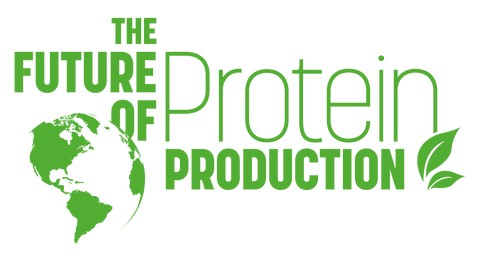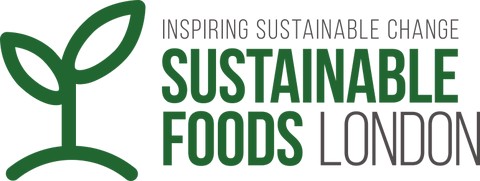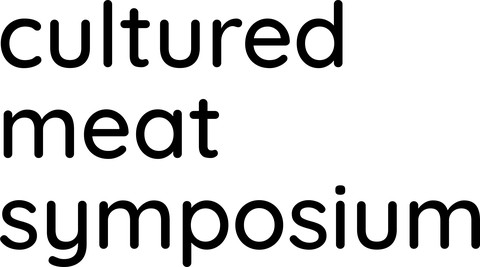High Moisture Extruded Scaffold for Cell-Based Clean Meat – The Next Generation of Research in the Clean Meat Field
November 3, 2021 - 16 min read

NA
This is a Student Essay Contest 2021* runner-up. Hanzhang Zhou is a PhD student in the Integrative Science and Engineering Programme, NUS Graduate School, and the Department of Physiology, Yong Loo Lin School of Medicine, at the National University of Singapore. Xuanming Lou is a PhD student in the Department of Physiology, Yong Loo Lin School of Medicine, at the National University of Singapore.***
1 INTRODUCTION AND RESEARCH BACKGROUND
1.1 Challenges imposed by conventional meat production system
Global meat production has become threefold since 1960, rising from 233 million metric tons in the year 2000 to 336.4 million metric tons in the year 2019 (Alexandratos & Bruinsma, 2012; Food and Agriculture Organization of the United Nations, 2019). The exponential growth of the livestock meat sector poses a huge challenge to the sustainability of the food production system. The inefficiency of animal agriculture is a prominent issue, as up to 97% of calories of animal feed are lost for the production of inedible tissues, and up to 670 million tons of cereals are used as livestock feed annually, representing over one-third of total world cereal use which would be sufficient to feed 3.5 billion people if released for human use (Flachowsky et al., 2018; Schmidinger, 2012; Speedy, 2003). In addition, compared to plant-based food, animal based products have huge impacts on the environment, generating 14.5% of green-house gases, taking up 30% of Earth’s terrain and 8% of the global freshwater (Steinfeld et al., 2006). As the world expects a doubling of meat demand by 2050 (Steinfeld et al., 2006), traditional ways of meat production are hardly sustainable.
Another concern about animal-based products is their association with various public health issues, such as foodborne illnesses like swine and avian influenza, mainly due to the poor farming conditions unfit for animal welfare (Greger, 2007). Therefore, producing meat in a clean and sterile environment may prevent foodborne illnesses and improve food safety. Another health concern related to animal-based products is the overuse of antibiotics which leads to increased antimicrobial resistance in microbial strains. It is forecasted that by 2050, antimicrobial resistance will cause more deaths than cancer (O’Neill, 2014). Producing meat in a sterile environment and by using antibiotic-free media is therefore likely to significantly reduce the use of antibiotics.
Given the aforementioned concerns about sustainability, environmental burden and animal welfare caused by the conventional meat production through livestock, and the constant high demand for meat products globally, the urgency to explore alternatives to relieve the burden and pressure of livestock meat production is apparent. Therefore, producing meat in a clean and sustainable way is of special interest in public opinion, animal welfare organizations and the scientific community, and is also in line with the government’s development plan.
1.2 Review of plant-based meat analogues
There has been some progress on developing meat substitutes from plant-based sources such as soy (Riaz, 2005), legume (Kyriakopoulou et al., 2019), wheat (Malav et al., 2015) or mycoprotein (Quorn) (Finnigan, 2011). However, it appears difficult for these plant-based products to closely mimic the texture and taste of animal meat by using vegetable-origin proteins, fat and sugars (Elzerman et al., 2011), especially unable to mimic the textural profile of muscle fibres. The vegetable origin meat substitutes are therefore mainly being used in processed meats such as burgers, sausages or other types of minced products, but not in whole meat cut. In addition, plant-based products also lack equivalence with similar meat products in terms of the content of key nutrients such as essential amino acids, minerals and vitamins (Curtain & Grafenauer, 2019), which is another major limitation for vegetarian/vegans and meat consumers alike.
1.3 Clean meat as an appealing meat source
Clean meat is meat produced in vitro, based on cell and tissue engineering techniques. It is composed of muscle tissue that is grown from initial cell cultures obtained from live animals and has gained increasing attention in the academia due to the potential ability to solve traditional animal agriculture problems. From a culinary perspective, clean meat is able to mimic animal meat products to recreate the characteristic sensations such as visual appearance, textural profiles, taste and aroma by growing different types of cells in a controlled and customizable platform (Ben-Arye & Levenberg, 2019). The simple and precise manipulation of the in vitro cell culture environment would allow fine-tuning of meat traits to give rise to unprecedented flavours. From an environmental perspective, life cycle analyses find that cultured meat will have approximately 7-45% lower energy use, 78-96% lower greenhouse gas emissions, 99% lower land use, and 82-96% lower water use than conventionally farm-grown animals (Mattick et al., 2015; Tuomisto & Teixeira De Mattos, 2011). From a technology perspective, during the last decades, tissue engineering and cell culture have been increasingly developed in the medical field, enabling lab-grown human tissues and organs. In 2014, the first clean meat prototype was successfully established from bovine satellite cells using tissue engineering and cell culture techniques (Post, 2014), proving the feasibility of these medical methods in clean meat production in the future.
Despite the superiority in environmental impact, the current clean meat field nonetheless faces several critical challenges. The first hurdle is the cost. The prohibitive cost of the biofabricated meat (up to $50,000 per pound) is the main obstacle for mass production of clean meat. The current method to produce clean meat is largely adapted from tissue engineering and cell culture which are two expensive methodologies in the medical field due to the high cost of biopolymers, growth factors, enzymes and numerous analytical molecules required. The adaptation of the high-cost medical technology to a relatively low-margin market – the food industry – is of serious concern regarding the cost-benefit of clean meat projects. The second hurdle is organoleptic properties, especially texture. According to a large-scale consumer insight report, taste is the most important attribute of meat alternatives, and the belief that meat analogues don’t taste good is the primary barrier to consumer adoption (Mintel, 2018). The current researches in the cell-based meat field, however, failed to focus on the sensory properties of their prototypes (Kyriakopoulou et al., 2021).
Therefore, clean meat production techniques need to focus on cost reduction while maintaining the functional properties (i.e. to recapitulate the sensory profile of real meat).
1.4 Review of techniques to engineer clean meat
Several techniques have been proposed to create meat-like structures. They can be roughly divided into 2 categories — mimicking the structure on larger length scales (i.e., top-down) or creating individual structural elements that are subsequently assembled into larger products (i.e., bottom-up) (Dekkers et al., 2018). The top-down strategies are able to mimic the structure of meat on larger length scales, but it has no resemblance to meat in terms of its primary, submicrometer architecture which is critical in providing the texture.
In contrast, the bottom-up strategies allow a more precise design of the meat structure by the use of structured scaffold to direct and support growing cells. By providing physical anchors for cell attachment and stretching, scaffolds can lead cells to differentiate and merge into elongated fibrous myotubes. The formation of myotube is regarded as the signal of initial development of muscle tissue and is the main structural configuration of muscle (Dekkers et al., 2018). In addition, by controlling meat structure and as an endogenous part of the final muscle tissue, scaffolds also make significant contributions to the textural properties to the final product. Hence, scaffolds are one of the best platforms to achieve both functional purposes. That being said, scaffold material is of crucial importance as it often decides how scaffold behave while being seeded cells and how consumers accept the sensory cues of the final product. Hence, attentions must be paid in designing the scaffold as the main component of the meat structure.
The current scaffolding technology use either a hydrogel or a macroporous, sponge-like biomaterial. Their drawbacks cannot be ignored. Specifically, the types of hydrogels that have been proved feasible for the development of cell-based meat are mainly animal-sourced (e.g. collagen and gelatin), the harvesting of which involves sacrificing animals. This is at crosspurpose of the clean meat field whose aim is free of cruelty. There is also a high cost incurred to purify these animal-derived hydrogel materials beforehand, which is the reason why it is far from being commercialized. Moreover, as hydrogels are soft materials that often support the formation of organoid but not a vascularized, highly structured muscle tissue due to technical limitations (such as the difficulty to deliver nutrient to the core of organoid and to control the alignment of muscle fibers), it often fails to provide the essential textural properties to the clean meat product (Kyriakopoulou et al., 2021). On the other hand, sponge-like, 3D biomaterials may be better at providing mechanical support to the tissue. Researchers have tried to use decellularized apple scaffold for fat tissue engineering and celery for tendon tissue engineering (Contessi Negrini et al., 2020). Plant being the base material also allows the opportunity for cost reduction in terms of raw material preparation. Nevertheless, the complexity of scaffold decellularization is probably the biggest hurdle that compromises its scalability. For instance, decellularization of a piece of spinach leaf involves 5 rounds of perfusion with 6 types of chemicals across 9 days (Gershlak et al., 2017).
Therefore, given the aforementioned challenges, the current scaffolding techniques for engineering a meat-like structure needs to focus on using an easy-to-scale-up and low cost method for scaffold establishment. In addition, since scaffold material is of crucial importance as it often decides how scaffolds behave while being seeded cells and how consumers accept the sensory cues of the final product, attention must be paid in choosing an edible material which has a meat-like texture itself as the main component of the meat structure. Overall, it is important to bear in mind that both scaffold and cells should synergistically improve the appearance and texture of the final product, and that cost reduction could be achieved in terms of using more cost-effective scaffold manufacturing techniques.
An appealing solution to this problem is using high moisture extrusion to develop a cell scaffold which not only has a meat-like fibrous structure that can provide the texture that can closely mimic that of the real meat but also can be manufactured at an industrial scale.
2 PROPOSAL – HIGH MOISTURE EXTRUDED SCAFFOLD FOR CELL-BASED MEAT
High moisture extrusion (HME) a technology for texturizing vegetable protein into a product with fibrous texture like animal meat. It is known to be a better method than conventional lowmoisture (dry) extrusion for enhancing the texture of meat analogue. By adding protein powders and water into twin screw extruders, the proteins undergo a process of mixing and hydration, thermal mechanical processing, and cooling (Cornet et al., 2021). In this process, the globular structure of proteins will be changed to fibrous structure by shear alignment (Beniwal et al., 2021). With the inherent aligned fibrous structure, high moisture extruded scaffold (HMES) has a meat-like fibrous structure. This fibrous structure, and the texture profiles, can be easily modified to be comparable to meat by simply optimizing the ingredients (Chiang et al., 2019).
Because of its comparable sensory profiles to meat and its high scalability, HME has already been utilized to make plant-based meat analogues that have been already commercialized. If it is used in the field of cell-based meat, we can expect the scaffold itself to provide major meatlike fibrous structure and texture profiles that are already widely accepted by consumers. In this way, the gap between novel clean meat product and consumers are largely narrowed.
Hence, The edibility, sustainability and scalability of high moisture extruded scaffold (HMES) is likely to help to address the inherent challenges in the clean meat field by making the final product more meat-like and cost-effective.
In terms of the ability to support cell growth, researchers have demonstrated that textured soy protein as a scaffold material can support growth and differentiation of bovine satellite cells (Ben-Arye et al., 2020) without cytotoxicity. Hence, applying HME using plant protein (such as soy or wheat protein) as the base material is likely to be non-cytotoxic and may support cell attachment and growth. At the same time, the fibrous structure of HMES can closely recapitulate the microenvironment of muscle tissue and could be supportive for the merge and differentiation of muscle cells.
2.1 Preparation of scaffold from sliced HMES sheets
By adding protein powders and water into twin screw extruders, the proteins undergo a process of mixing and hydration, thermal mechanical processing, and cooling (Cornet et al., 2021), and the primary product is an extruded protein bars. The protein bars are not suitable to be directly used for cell culture as their structures are too thick (> 1cm) and compact. With this thickness and its solid compact structure, there is limited space for cell penetration and diffusion of nutrients and oxygen. Thus, further treatment of HME protein bars are required to prepare scaffolds proper for cell culture.
The HME protein bars can be either cut into small blocks or sliced into thin sheets for use as scaffolds. By reducing the size, limitations for cell penetration and diffusion of nutrients and oxygen can be remediated. The only concern of cutting the HME protein bars into small blocks is that it will be labour-intensive to assemble these blocks to build whole-cut meat, since the size of each block is only a few millimetres. Thus, we propose another potential method by slicing the HME bars into thin pieces and do a 2D cell culture on the surface. By doing so, only the dimension in thickness should be controlled at the millimetre scale for cell penetration and nutrients transport, the width and length can be increased. After cells are seeded onto the scaffold, multiple layers of HME sheets containing cells can be simply stacked together and made into meat cut. This stacking method will save much time and cost compared with assembly of small blocks.
2.2 Cell culture on HME scaffold
Scaffolds prepared by HME should be supportive for the culture of satellite cells (also known as muscle stem cells). The highly aligned fibrous structure of HME scaffold can help align satellite cells into tubular orientation and thus support it to differentiate and merge into myotubes (Ben-Arye & Levenberg, 2019). In addition, previous researches on protein-based scaffold has proved that protein as scaffolding material can support cell growth and differentiation of bovine satellite cells (Ben-Arye et al., 2020) without cytotoxicity. Hence, it is obviously feasible to use protein as a base material for HME scaffolds (HMES), although how different types of proteins would affect cell viability and differentiating ability is pending to study further.
To meet the requirement of scalability, there are two ways. The first way is to increase the size of each HMES sheet, the second is to increase the number of HMES sheets in each preparation round. For the first one, the size of width and length of individual building block would be expected to achieve several centimeters to ten centimeters. However, culturing only one sheet at a time is time-consuming, it is more feasible to increase the number of HMES sheets for each scaffold by decreasing the size of each sheet. Hence, we propose to use a chamber with multiple layers, each layer containing only one HMES sheet. This chamber can be linked with a reservoir containing culture medium and a pump to transport the medium, and multiple HMES sheets can be cultured in one chamber simultaneously. This process can be further scaled up by increasing the number of chambers. The viability of using reservoir and pump to transport medium and support muscle cell culture has been tested in another research (Schuster et al., 2017).
2.3 Fabrication of whole-cut meat by HMES sheets with cells
After culturing satellite cells on HMES sheets, each of these sheets is a building block for the final whole-cut meat. By stacking multiple building blocks and binding them with edible materials, a whole-cut meat can be fabricated. Transglutaminase is an edible meat cross-linker in the meat industry and has been applied in recent research to bind cell fibers for fabrication of meat analogue (Kang et al., 2021). Hence, we would like to propose to use transglutaminase as a binding material for HMES sheets. The transglutaminase can be made into solution state and brushed or sprayed with a fixed amount on top of each HMES sheet. This stacking and binding process is quick, can be easily operated and has a potential for automatization, and is therefore scalable. The final whole-cut meat product is expected to have the desired meat-like texture and structure, and this can be tested by using a characterization machine and rigorous sensory evaluation tests.
3 IMPLICATIONS OF OUR PROPOSAL
3.1 HMES can provide a meat-like structure and texture to the final product
Supporting cell culture is an essential functionality for scaffolds from the perspective of tissue engineering, but in terms of cell-based meat, the structure of scaffolds should provide the basic meat-like texture on top of cell-supporting functionality. Because the scaffold is making up a major component in the final meat cut, its structure and texture will directly influence the structure and texture of the final product (which are the two most important criteria for consumer acceptance) (Mintel, 2018). Previous researches did not pay much attention to the structure and texture of scaffolds. Hereby we propose, by using a scaffold with meat-like fibrous structure and texture through HME, the structure and texture profiles of cell-based meat can be expected to be largely improved. Meanwhile, by using this kind of material, we would also like to draw more attention on optimizing the structure and texture of scaffolds in cell-based meat, instead of just focusing on improving the ability to support cell culture.
3.2 HMES is superior in terms of scalability and sustainability for cell-based meat
To meet the requirement of meat supply, scaffold fabrication must be scalable and high throughput. To fulfil the requirement of sustainability, scaffold material should be easily accessible and not animal based. HME is already employed by manufacturers on a large scale in the plant-based meat analogue industry. By using it as a scaffold, the scalability of the scaffold is promised. In addition, the material for HME is highly flexible. Many plant proteins can be applied, including soy proteins, pea proteins, wheat proteins and lupin protein (Cornet et al., 2021). These proteins are easily accessible with low cost and are often regarded as an healthier choice by consumers. Hence, scaffolds from HME are likely to be highly sustainable and readily accepted by consumers.
4 CONCLUSION
In conclusion, the current focus for clean meat production should be cost reduction while maintaining the functional properties (i.e. to recapitulate the sensory profile of real meat), given that the two main hurdles for the current clean meat prototype to be commercialized are the high cost and the inferior textural profile. By controlling meat structure and as an endogenous part of the final muscle tissue, scaffolds can significantly contribute to the textural properties to the final product. Hence, it is important to understand that both scaffold and cells should synergistically improve the appearance and texture of the final product, and that cost reduction could be achieved in terms of using more cost-effective scaffold manufacturing techniques. In this essay, we propose to use HME as a technique to manufacture a highly structured scaffold for cell-based clean meat so that the structure and texture profiles of cell-based meat can be expected to be largely improved while at a relatively low cost. More importantly, we would like to appeal for researchers in this field to pay more attention on optimizing the structure and texture of scaffolds in cell-based meat, instead of solely focusing on its functionality to support cell culture. After all, everything will eventually boil down to commercialization and industrialization.
References

















